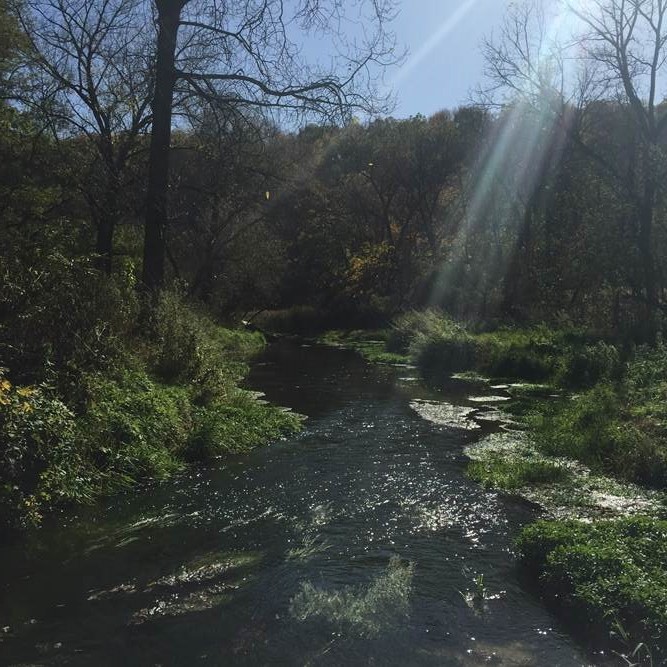What is clean water worth? And who should decide?

posted
by Clare Kernek on Monday, February 13, 2017
When a body of water is polluted in the event of an oil spill, for example, the need for clean-up efforts is a given and easy for most to understand. However, the rationale for mandating (and insuring) the protection of superior quality resources is not as obvious. That may be why implementation of the antidegradation requirements of the Clean Water Act—aimed at keeping clean water clean—has often been controversial and even contentious.
In 2010 Iowa established an antidegradation program that was commended by the EPA with the comment that, “antidegradation plays a critical role in allowing Iowa to maintain and protect the finite resource of clean water and ensure that decisions to allow reductions in water quality are made in a public manner and serve the public good.”
Over the past year, several groups worked with Iowa’s Department of Natural Resources (DNR) to make changes to Iowa’s antidegradation rules that, if approved by the EPA, would weaken water protections. The Iowa Environmental Council (IEC) worked with Environmental Law and Policy Center to fight this ongoing threat to Iowa’s waters at each step. On January 19th, 2017 the EPA sent a letter to Iowa DNR stating that the changes to Iowa’s antidegradation rules could not be approved because they violate federal Clean Water Act regulations.
Public input is considered an essential part of the antidegradation review process. This makes sense, as our lakes, rivers and streams are public waters belonging to —the public. In its letter, EPA explained that “the public should have a voice in the ultimate outcome” of antidegradation reviews, and based its disapproval in part on the fact that the new one-size-fits-all cost comparison test limits the public’s opportunity to weigh in on individual cases.
The goal of the Clean Water Act, according to language Congress included in the law enacted during the Nixon administration, is to “restore and maintain the chemical, physical and biological integrity” of the nation’s waters.
Antidegradation addresses the Clean Water Act’s objective of maintaining water quality—an equally important goal to architects of the Act such as Sen. Edmund Muskie who stated the importance of preserving, “the beauties of nature…in almost pristine form”. The rationales for requiring states to have antidegradation programs to protect waters that are already cleaner than the minimum requirements of the Clean Water Act ensure no backsliding. Protecting such waters from being degraded is important for the following reasons:
- High quality waters are a public resource with economic, public health, and ecological value.
- Maintaining high water quality—meaning water that already meets or exceeds state water quality standards—provides a “margin of safety” to offset the risk that current regulations may not provide sufficient protection.
- Preserving a measure of “assimilative capacity” for a waterbody that already has numerous permitted facilities discharging into it, thus ensuring that future growth can be accommodated.
- Providing heightened protections for special or unique resources—such as the spring-fed trout streams in Northeast Iowa that have been designated “Outstanding Iowa Waters” as part of Iowa’s antidegradation standards.
An antidegradation program provides these protections by establishing a review process for requests to discharge more pollution into a lake or stream. According to EPA, “In essence, a state’s antidegradation policy provides a framework for weighing the pros and cons of a proposed activity that could degrade water quality and for involving the public in the decision-making.”
The story doesn’t end with the EPA’s recent decision. DNR has asked Gov. Branstad to appeal the decision to the new EPA, hoping they will receive a more favorable decision under an EPA with different leadership. The leadership at the EPA has recently changed, but the Clean Water Act has not.
IEC was actively involved in the multi-year process, involving diverse stakeholder input and numerous public meetings, that led to Iowa’s strong but reasonable antidegradation rules. In the past, the Council offered to work with all stakeholders to ensure meaningful and reasonable protections are in place. However, we will continue to oppose efforts to weaken these important protections. As this story evolves, we will continue to provide updates. We hope that citizens across Iowa will join us in voicing support for an antidegradation policy that will keep Iowa’s clean waters clean for future generations.
For more information about this case check out a Cedar Rapids Gazette Editorial:
"Put the brakes on changes to clean water rules in Iowa", Cedar Rapids Gazette, August 9,2016.
Photo of Bloody Run Creek, a trout stream in Northeast Iowa, taken by Kevin Hansen
- water quality